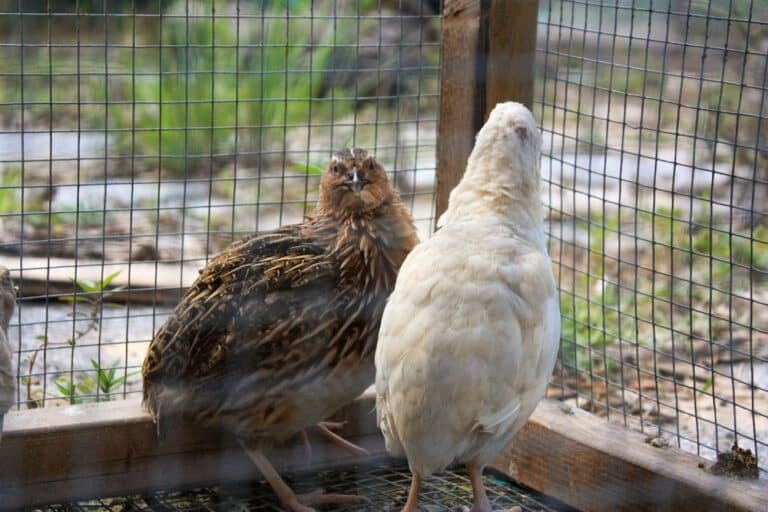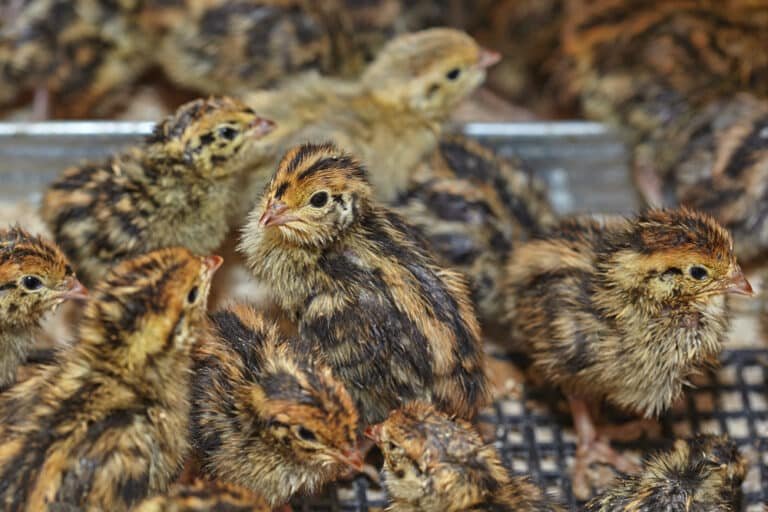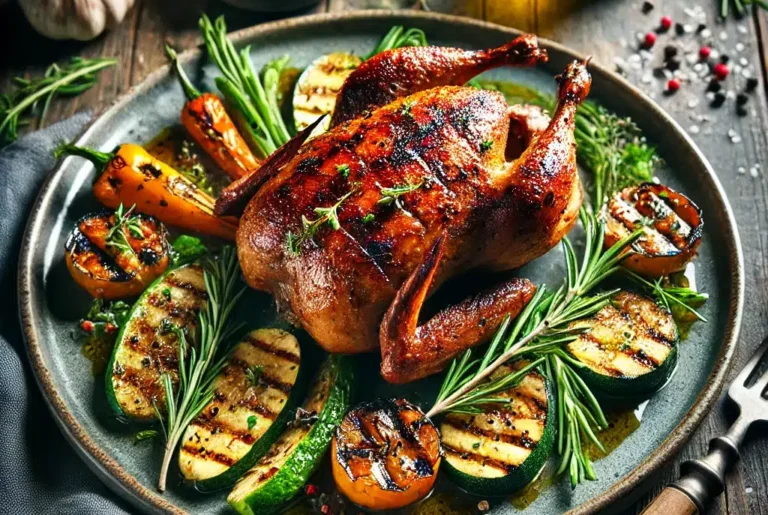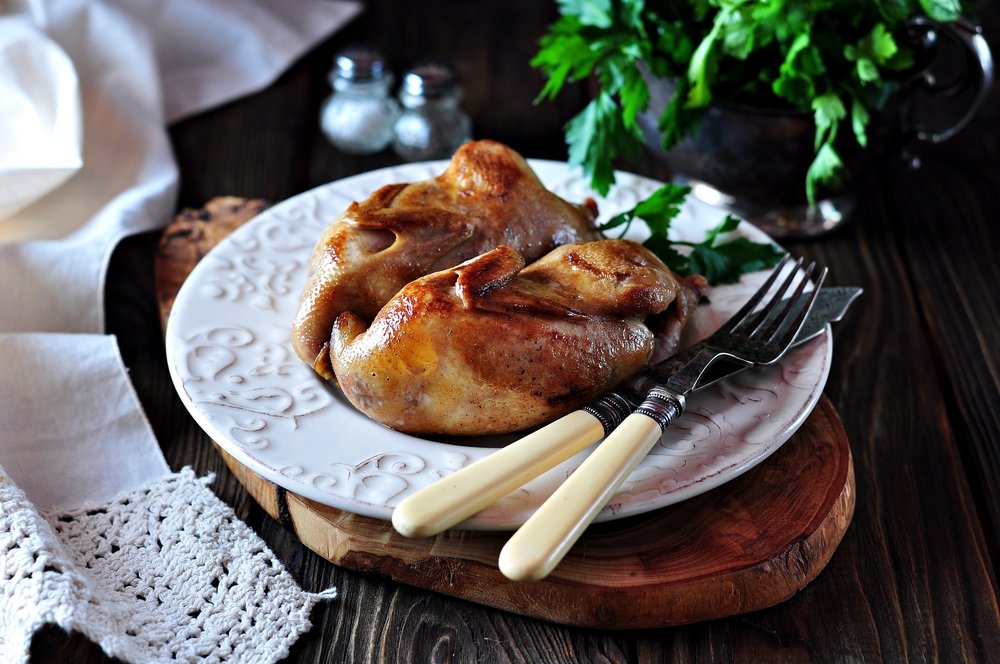The Most Popular Types of Quail – Species Breakdown
Quail, belonging to the family Phasianidae and order Galliformes, are a diverse and fascinating group of birds that captivate the imagination of bird enthusiasts worldwide. With their charming appearance and unique behaviors, quail have garnered significant attention in various cultures and industries. Various types of quail have long been associated with culinary delights and sporting endeavors and even served as symbols in literature and art.
Brief Overview of Quail as a Group of Birds
Quail encompass several species known for their characteristic plump bodies, short beaks, and intricate feather patterns. From the Gambel’s Quail of the American Southwest to the Japanese Quail domesticated in Japan for centuries, each species within this avian family possesses distinct traits that set them apart. Additionally, quail exhibit remarkable diversity in size, habitat preference, behavior patterns, and vocalizations.
Importance and Popularity of Quail in Various Cultures
Throughout history, quail have held significance in different cultures across the globe. In ancient Egypt, they were revered as symbols of divinity and considered a delicacy on Pharaohs’ tables.
Quail in Chinese folklore and poetry often symbolize love or depict loyalty due to their monogamous mating habits. Moreover, quail have become integral to numerous cuisines worldwide.
The succulent meat they offer has made them highly sought-after game birds for culinary purposes. Their distinctive flavor adds a touch of richness to various dishes, such as Mediterranean-style roasted Quail or Asian-inspired grilled quail skewers.
Importance and Popularity of Quail in Various Industries
Quail farming has emerged as a lucrative industry globally due to the meat production potential and egg-laying capacity offered by certain species like the Coturnix Quail group. These small-sized birds are known for their quick growth and high reproductive rates, making them an excellent choice for commercial farming.
The Jumbo Coturnix Quail variety has gained popularity in the poultry industry due to its larger size and meat yield. In addition to agriculture, quail have also found a place in the sporting arena.
The Bobwhite Quail is renowned among hunters for its challenging flight patterns and elusive nature. These birds make for exciting game targets during hunting expeditions, contributing to the popularity of quail hunting as a recreational activity.
Quail captivate us with their unique characteristics and have established themselves as significant players in cultural traditions and various industries worldwide. From their cultural symbolism to their delectable taste on our plates or thrilling pursuits in the wild, quail leave an indelible mark on our lives.
General Classification of Quail
Family: Phasianidae
The classification of quail places them within the diverse family Phasianidae, including pheasants, partridges, and peafowls. This family is renowned for its remarkable diversity in morphology, behavior, and habitat adaptation.
Quail are characterized by small to medium-sized bodies, rounded shapes, and short beaks. While numerous species within the Phasianidae family exist, quail stand out due to their distinct features and unique attributes.
Order: Galliformes
Quail belong to the order Galliformes, a taxonomic group encompassing various ground-dwelling birds known for their terrestrial habits. This order includes quail and other notable avian families such as chickens, turkeys, pheasants, and grouse.
The Galliformes order is known for its strong legs, which are adapted for walking or running on the ground, while also possessing wings that enable short-distance flights. These birds often exhibit elaborate courtship displays during breeding seasons.
Perdicinae
Within the Phasianidae family and Galliformes order lies the subfamily Perdicinae, to which quail are specifically assigned. The Perdicinae subfamily encompasses smaller- to medium-sized game birds commonly found in grasslands or open habitats across different continents. Quail belonging to this subfamily display distinct characteristics that set them apart from other members of the Phasianidae family.
These features include their preference for ground-nesting habits and a diet predominantly consisting of seeds and insects. Quail species are found worldwide with varying distributions depending on geographic regions and specific habitats they inhabit.
From the celadon Quail of Africa to the blue Quail (Excalfactoria chinensis) of Asia and the bobwhite quail (Colinus virginianus) native to North America, each species has adapted uniquely to its respective environment. The classification of quail into the family Phasianidae is based on shared characteristics such as their rounded body forms, small size relative to other game birds, and short beaks designed for ground foraging.
These features make them easily recognizable among their avian counterparts. Furthermore, being part of the Galliformes order signifies their terrestrial habits with well-developed legs for running or walking.
Perdicinae lies a diverse array of quail species within the subfamily with varying physical attributes and behavioral patterns. This subfamily classification distinguishes them from other members of the Phasianidae family by emphasizing their ground-nesting behavior and diet preferences.
Quail are highly adaptable birds that have managed to thrive in different ecosystems across continents due to their ability to exploit various food sources. Understanding the general classification of quail sheds light on their taxonomic position within the Phasianidae family, Galliformes order, and Perdicinae subfamily.
This classification highlights both commonalities shared among different types of quail while also highlighting unique features that set each species apart. By grasping these distinctions, we can further appreciate these captivating birds’ diversity and ecological significance.
Description and Physical Characteristics
The Common Quail, also known as the Eurasian Quail, is a small bird that belongs to the Phasianidae family. It exhibits various physical characteristics that distinguish it from other quail species. In terms of size, Common Quail measure approximately 6-7 inches in length and weigh around 3-6 ounces, making them relatively compact birds.
One notable feature of the Common Quail is its plumage variation. The male and female individuals display sexual dimorphism, with the males exhibiting more distinct coloring.
The male’s plumage typically showcases a combination of brown, black, and buff tones, while the female’s feathers are more subdued in coloration, mostly brown with lighter markings. This distinction allows for easier differentiation between genders.
Habitat and Distribution
The Common Quail’s natural range spans Europe, Asia, and Africa. These birds prefer habitats such as open farmland, grasslands, marshes, and cultivated areas where they can find cover to hide from predators while foraging for food.
They are highly adaptable creatures capable of surviving in diverse environments. During the breeding season, which typically occurs between April and August in most regions inhabited by these quail, they exhibit an interesting migratory pattern.
Originating from their overwintering grounds in sub-Saharan Africa or southern Europe, they embark on long-distance journeys to northern regions for breeding. This migration can span thousands of miles and involves crossing various geographic barriers, such as deserts or large bodies of water.
Behavior and Lifestyle
The behavior and lifestyle of Common Quail are intriguing aspects worthy of exploration. Mating rituals play a significant role during breeding season when males engage in elaborate courtship displays to attract females.
These displays often involve impressive feats, such as vocalizations characterized by unique calls, fluttering wings, and elaborate dances. Regarding nesting habits, Common Quail prefer ground nest sites concealed within vegetation or grassy areas.
Females are responsible for incubating their eggs for approximately 17-18 days. Once hatched, both parents care for the precocial chicks until they can fend for themselves.
This includes guiding them towards suitable foraging areas and providing protection from potential threats. Regarding feeding preferences, Common Quail primarily consumes various seeds, grains, small insects, and green vegetation.
Their foraging behavior is characterized by scratching the ground with their short beaks to uncover food sources. This enables them to maintain a balanced diet while adapting to the available resources in their environment.
Overall, the Common Quail showcases various fascinating features contributing to its survival and successful reproduction. From its distinctive physical characteristics like its round body shape and short beak to its habitat choices spanning Europe, Asia, and Africa, this species exhibits remarkable behavioral traits such as intricate courtship displays during mating rituals and parental care after hatching.
Furthermore, their feeding preferences and foraging behaviors showcase their adaptability in various environments. Understanding these aspects provides us with valuable insights into the life of these remarkable avian creatures.
Description and Physical Characteristics
The Japanese Quail, scientifically known as Coturnix japonica, is a small-sized bird with an average length of 15-20 centimeters and weighing around 70-100 grams. The Japanese Quail is larger than other quail species, such as the King Quail or Bobwhite Quail.
Its body is plump and compact, with a rounded appearance. The beak is short and pointed, ideal for pecking at seeds and insects.
Color Variations
One remarkable aspect of the Japanese Quail is its wide range of color variations. While the natural wild form exhibits brown plumage with black streaks, numerous domesticated strains have been selectively bred to display captivating color patterns.
These include golden varieties with vibrant reddish-brown feathers adorned with striking black stripes and spots. Other popular color mutations include silver quail, characterized by their pale gray plumage with subtle markings, and tuxedo quail, contrasting white undersides and darker upper parts.
Habitat and Distribution
Originally native to East Asia, particularly Japan, the Japanese Quail has an extensive range of habitats on several continents today. Due to its popularity in commercial meat and egg production farming, this species has been introduced in many countries worldwide. Consequently, it can now be found across Europe, North America, Australia, Africa, and Asia.
Domestication History in Japan
The history of domesticating Japanese Quail can be traced back to ancient Japan around the 12th century during the Heian period. Initially kept for their melodic songs rather than their meat or eggs, aristocrats enjoyed raising these birds for their pleasant chirping sounds, adding tranquility to their gardens.
Over time, selective breeding programs were established to enhance desirable traits such as increased egg production, rapid growth rates, and unique plumage colors. These efforts led to developing various strains of Japanese Quail that are popular in commercial farming today.
Current Global Distribution and Commercial Farming
Japanese Quail have achieved global recognition due to their adaptability and economic value. They are extensively bred in captivity for both meat consumption and egg production.
Their ability to lay eggs throughout the year and their relatively small size compared to other poultry species make them a preferred choice for commercial quail farming. Large quail farms exist across different continents to meet the growing demand for quail meat and eggs.
This booming industry has made Japanese Quail a widespread avian species on farms worldwide. These birds have become integral to the poultry industry, from small-scale backyard operations to industrial-scale enterprises.
Behavioral Traits
Japanese Quail possess distinct behavioral traits that make them fascinating subjects of study. They exhibit prolific egg-laying patterns in captivity, producing up to 300 eggs annually under optimal conditions.
Their exceptional reproductive efficiency has contributed significantly to their popularity among breeders. Furthermore, social behavior within a flock is essential for Japanese Quail’s well-being.
They are highly gregarious birds that thrive when housed together with others of their kind. Establishing a pecking order is common within the flock hierarchy, where dominant individuals assert their authority over subordinates during feeding or courtship rituals.
The Japanese Quail (Coturnix japonica) is a captivating bird species with distinctive physical characteristics and diverse color variations in domesticated strains. Originating from Japan but now globally distributed due to commercial farming practices, these adaptable birds have become essential to modern-day poultry industries worldwide.
Beyond their economic significance lies an intriguing set of behavioral traits, including prolific egg-laying patterns and a social nature. Whether it be their significant role in commercial farming or their allure as backyard pets, Japanese Quail continue to captivate the interest and fascination of bird enthusiasts around the globe.
Species of Quail: Gambel’s Quail (Callipepla gambelii)
A Desert Dweller with Distinctive Features
Gambel’s Quail, scientifically known as Callipepla gambelii, is a unique species of Quail native to the arid landscapes of the American Southwest region. Named after William Gambel, an American naturalist who first discovered them in the mid-19th century, these quail possess several distinctive characteristics that set them apart from other species.
Gambel’s Quail are medium-sized birds with plump bodies and short legs. The males are strikingly adorned with a vibrant coppery-brown crest atop their heads and a black face outlined by white stripes.
Their underparts are pale gray, while their backs and wings showcase intricate patterns of scalloped brown feathers. Females have a more understated appearance with predominantly mottled brown plumage.
Arid Habitat Filled with Rich Biodiversity
These desert-dwelling quail primarily inhabit the arid regions of Arizona, New Mexico, California, Nevada, Utah, and northern Mexico. They have adapted remarkably well to the harsh conditions prevalent in these areas. Gambel’s Quail thrives in diverse habitats such as desert scrublands, chaparral brushlands, and semi-arid grasslands.
Their chosen habitats offer ample shelter and food sources, like seeds from desert plants such as mesquite trees and cacti. The presence of water sources like rivers or artificial ponds is vital for their survival since they require regular hydration.
Social Behavior and Intriguing Mating Rituals
Gambel’s Quail are highly social birds that typically live in coveys consisting of about ten to twenty individuals during non-breeding seasons. These coveys serve as a form of protection against predators and aid in the food search. However, during the breeding season, male quail engage in fascinating courtship rituals to attract mates.
The males exhibit elaborate displays by puffing up their chests, extending their necks, and calling out with a distinctive “ka-KOW-ka!” sound. These vocalizations can be heard echoing across the arid landscapes as they compete for the attention of females.
A Conservation Success Story
Gambel’s Quail populations have demonstrated resilience despite various challenges, such as habitat loss and predation by natural predators like coyotes and raptors. The adaptability of these quail to human-altered environments has also contributed to their survival.
Conservation efforts focused on preserving and restoring their habitats have led to positive outcomes, with Gambel’s Quail populations showing signs of stability or growth in some regions. This success story is a testament to the importance of responsible land management practices and raising awareness about the conservation needs of these unique species.

Conclusion
In a world where biodiversity is increasingly threatened, it is heartening to witness remarkable species like Gambel’s Quail thriving against all odds. Their ability to withstand harsh desert conditions and adapt to changing landscapes showcases nature’s resilience. By understanding the specialized characteristics, habitats, and behaviors of quail species like Gambel’s Quail, we gain valuable insights into our interconnectedness with these avian wonders.
As we delve deeper into understanding various quail species’ ecological niches and promote responsible conservation practices, we pave the way toward a future where these magnificent birds continue enchanting us with their beauty and enriching our ecosystems with their presence. Let us embrace our role as stewards of nature and work together towards safeguarding the diverse wonders that dwell within our ever-fascinating world.





